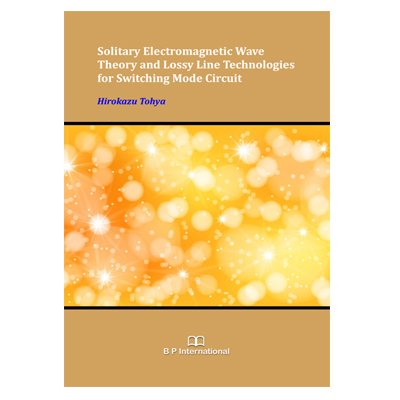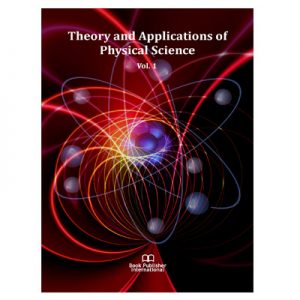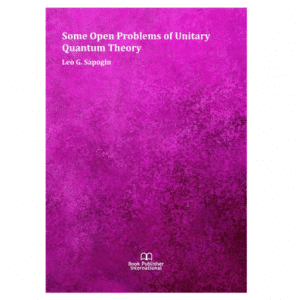The electric or electronics circuit engineers are addressing many kinds of the difficult problems whenever the development of the equipment and the systems. Among them, EMI including SI (signal integrity) and timing control of the signals will be the typical highly difficult problems of the digital circuit. However, the suitable design methodology based on the electromagnetic physics is not exist. The conventional design methodology of the digital circuit is in accordance with Boolean algebra and the AC circuit engineering theory. In addition, the microwave engineering theory is applied to the design of relatively long wiring.
The electric or electronics circuit can be categorized the digital circuit and the analog circuit. The digital circuit uses the switching behavior of the semiconductor device and the analog circuit uses the linear behavior of the semiconductor device. The switching behavior of the semiconductor device can be said operation with large-signal model transistors and the linear behavior of the semiconductor device can be said operation with small signal model transistors also. The circuit operating with large-signal model transistors is not only digital circuit but there are the switching mode power supply circuit (SMPC) and the inverter circuit. Therefore, it is considered that the circuit operating with large signal model transistors is suitable to be called the switching mode circuit (SMC). The analog circuit is used in a limited field today and SMC is being used in almost all electric and electronics equipment today.
All SMC consists of semiconductor devices and the transmission line. The transmission line consists of the insulator and the metal, which is called the interconnect in the case of LSI and is called the trace in the case of PCB.
The semiconductor devices change the electromagnetic field on SMC. According to the electromagnetism, the changed electric field or the changing magnetic field forms the electromagnetic wave. AC circuit engineering theory based on the static electromagnetic physics fits to the low frequency analog circuit in which the changing speed of the electromagnetic field is slow. The microwave engineering theory is based on the electromagnetic wave theory in electromagnetic physics in basic, therefor it is used to the high frequency analog circuit. Currently, it is believed that the signal of the digital circuit consists of wide band spectra in accordance with the AC circuit engineering theory. Therefore, the microwave engineering theory has been applied to the digital circuit design of relatively long wiring. However, this idea cannot be applied to the noncontinuous switching operation of the digital circuit in which there is nothing before turns ON and after turns OFF. Because, the electromagnetic waves forming the wide band spectra are the continuous wave which means that it has not both start timing and the stop timing.
To improve this situation, the solitary electromagnetic wave (SEMW) theory was developed. It is in accordance with to the current electromagnetic physics and only the electromagnetic wave form is different. The electromagnetic wave form in the current electromagnetic physics is continuous and it is shown by the frequency function. On the other hand, the electromagnetic wave form in the SEMW theory is alone and it is shown by the time function. The SEMW which is generated by the transistor operating with large signal model travels in the insulator of the transmission line at light speed approximately. The generation mechanism and the behavior of SEMW is presented in the novel SEMW theory in this book. The timing control for the interconnect designs of SoC/LSI cannot be analyzed by the electromagnetic wave theory of the conventional electromagnetic physics but it can be analyzed easily by using the SEMW theory.
At the design and analysis of SMC, many types of the instruments, CAD tools, and the simulators have been used. The time domain types have been used for the SMC engineers usually and the frequency domain types have been used for the EMC engineers and analog engineers. Timing design of the signals is the main objective for the SMC engineers and they have not believed the conventional electromagnetic physics. In contrast, to minimize the electromagnetic interference with the broadcasting service is the main objective of the EMC engineers and they have believed firmly the conventional electromagnetic physics. As the result, the conflicts and the sense of distrust occurred in some times between the SMC engineers and the EMC engineers sometimes. Appearance of SEMW theory will improve dramatically this situation.
Solving the EMC problems of SMC is too difficult by the conventional physics and the engineering knowledge. But it becomes easily by using the lossy line (LL) technologies consist of the low impedance lossy line (LILL) technology and the matched impedance lossy line (MILL) technology which was developed in accordance with SEMW theory. LILL technology is used to the power supply line of SMC and MILL technology is used to the signal transmission line. LILL has the low impedance that has about less than 1% of it of the signal line and has the large transmission loss about 50dB (≒300). MILL has the matched impedance with it of the signal line and has the relatively large transmission loss more than 30dB (≒30). The design method and the performance of these in the SMC are presented in this book.
SMC including SoC/LSI can be reformed to quasi-stationary state closed circuit (QSCC) easily by using LL technologies in accordance of the SEMW theory. SMC design and analysis will become easily by this way. The design examples of QSCC are presented in this book.
In this book, the SEMW theory and technologies based on it are discussed in accordance with the conventional electromagnetic physics. Therefore, the solution or the guideline which is presented in this book will be accepted willingly by not only SMC engineers but all electric and electronics engineers.





